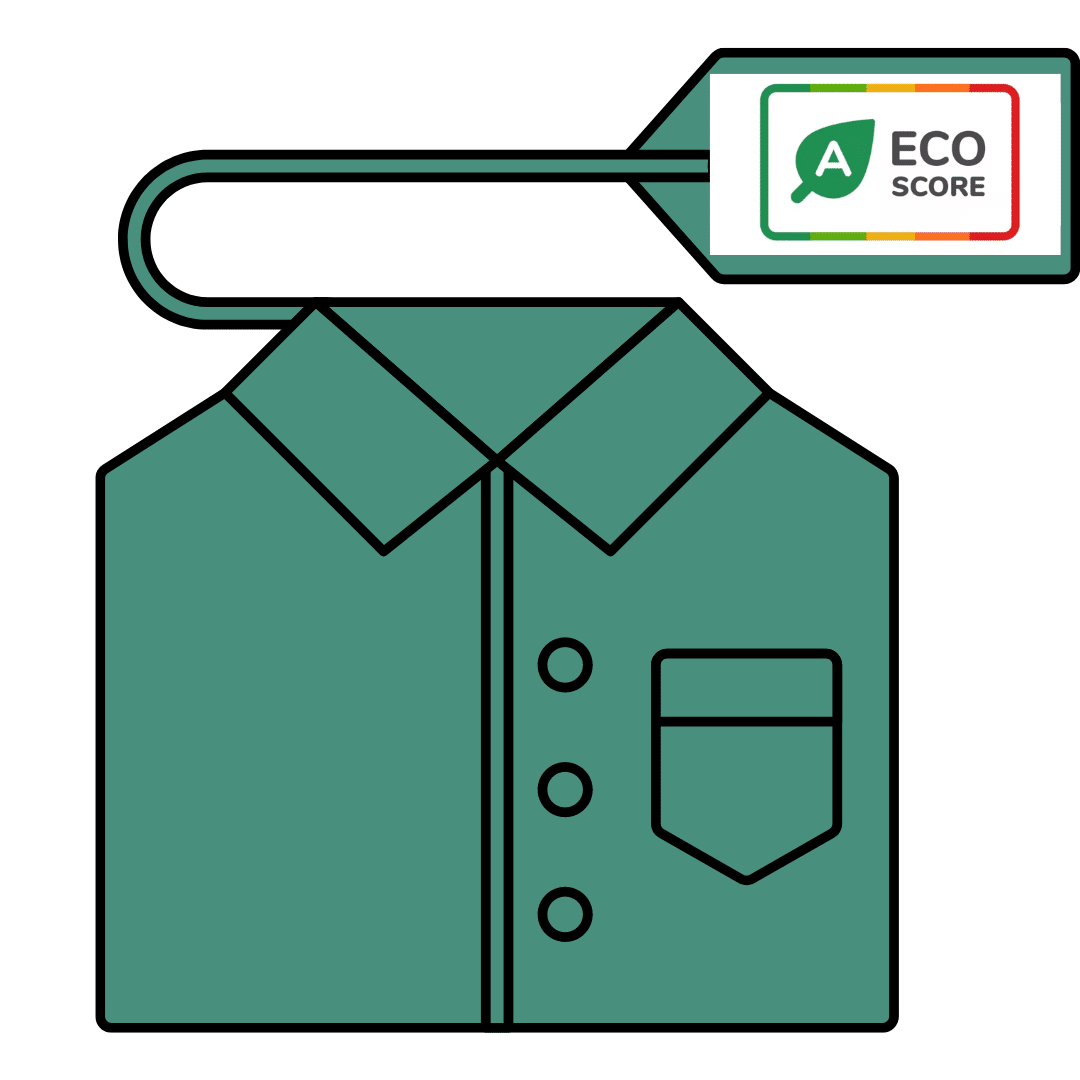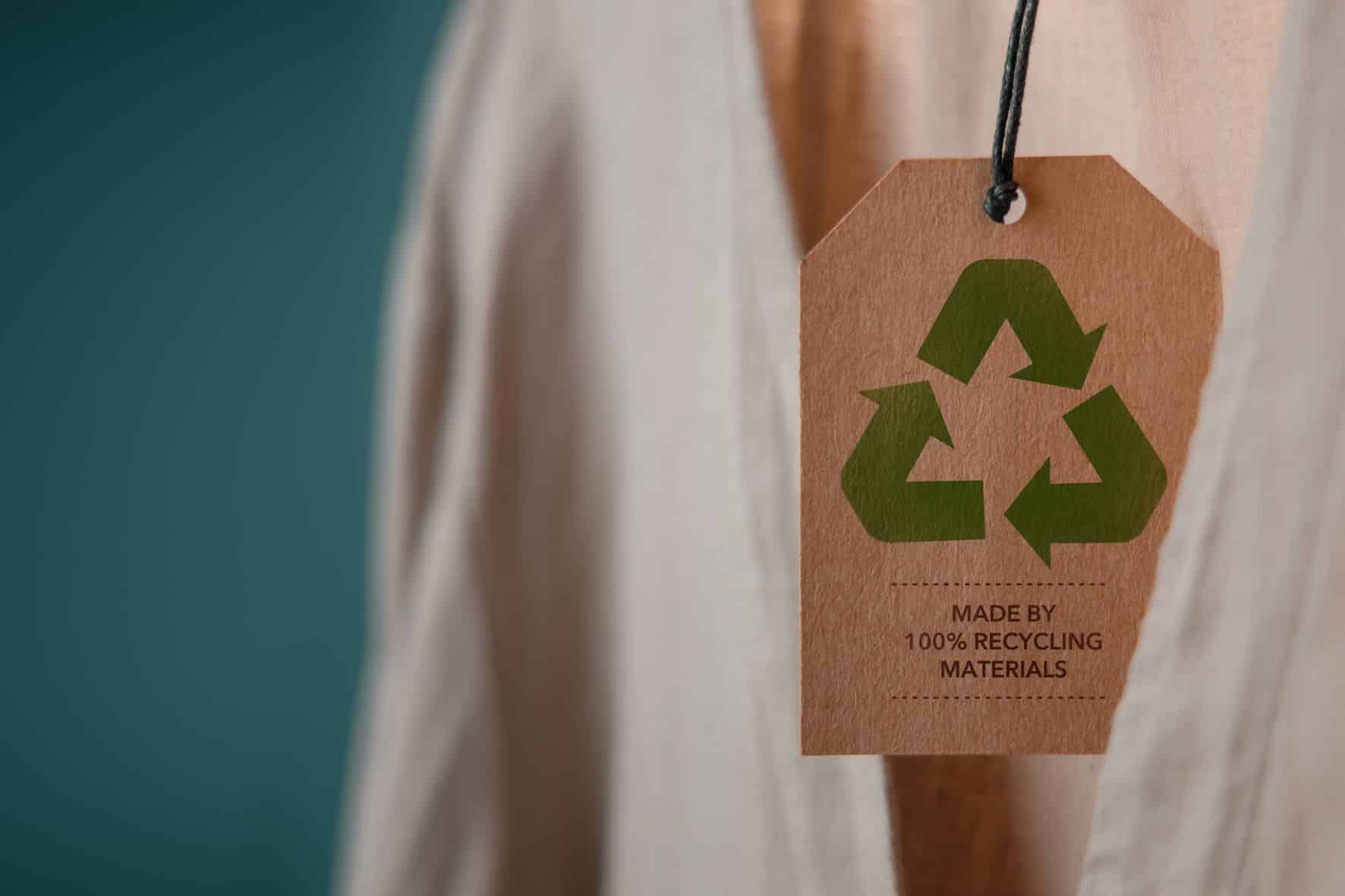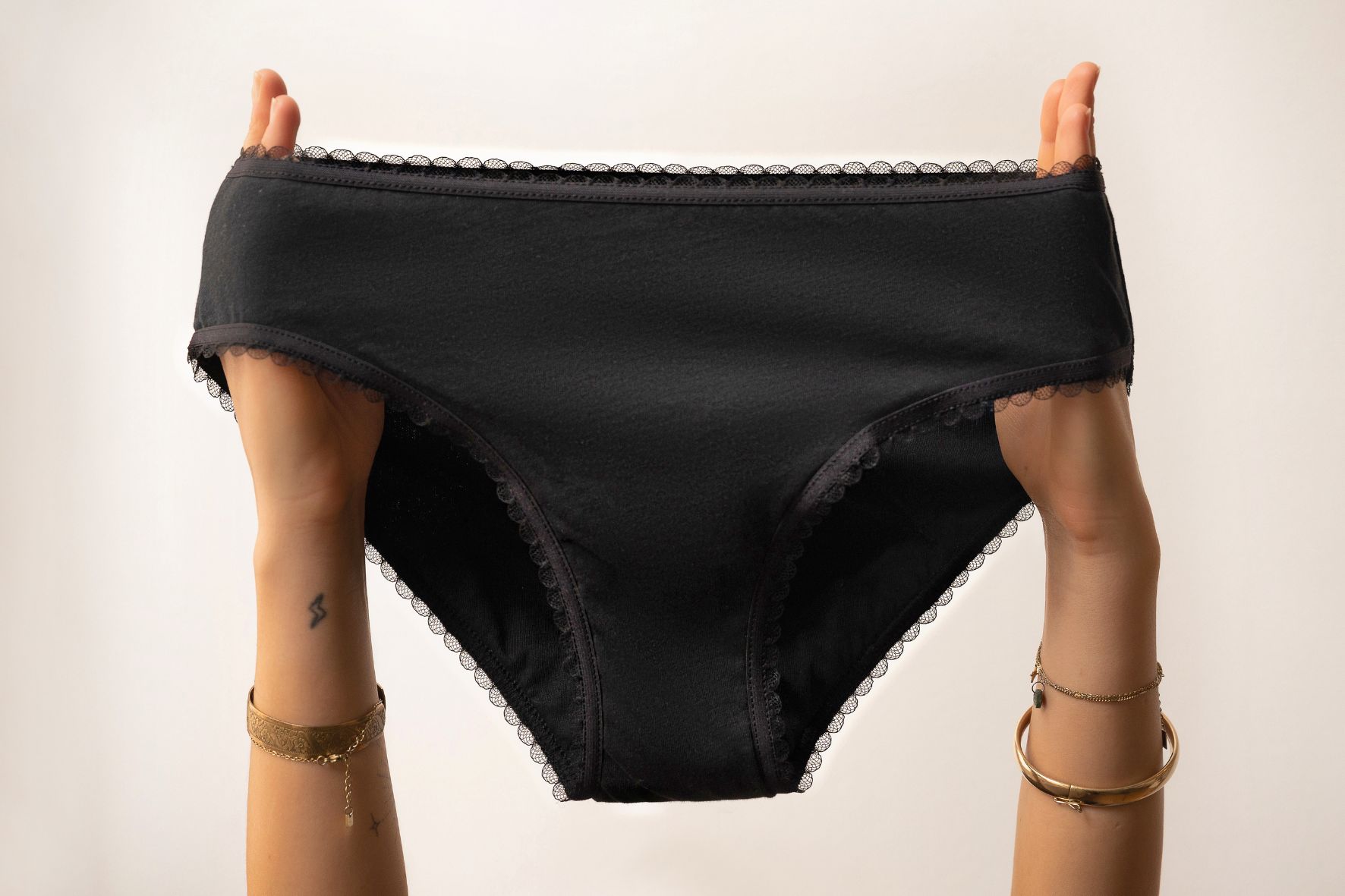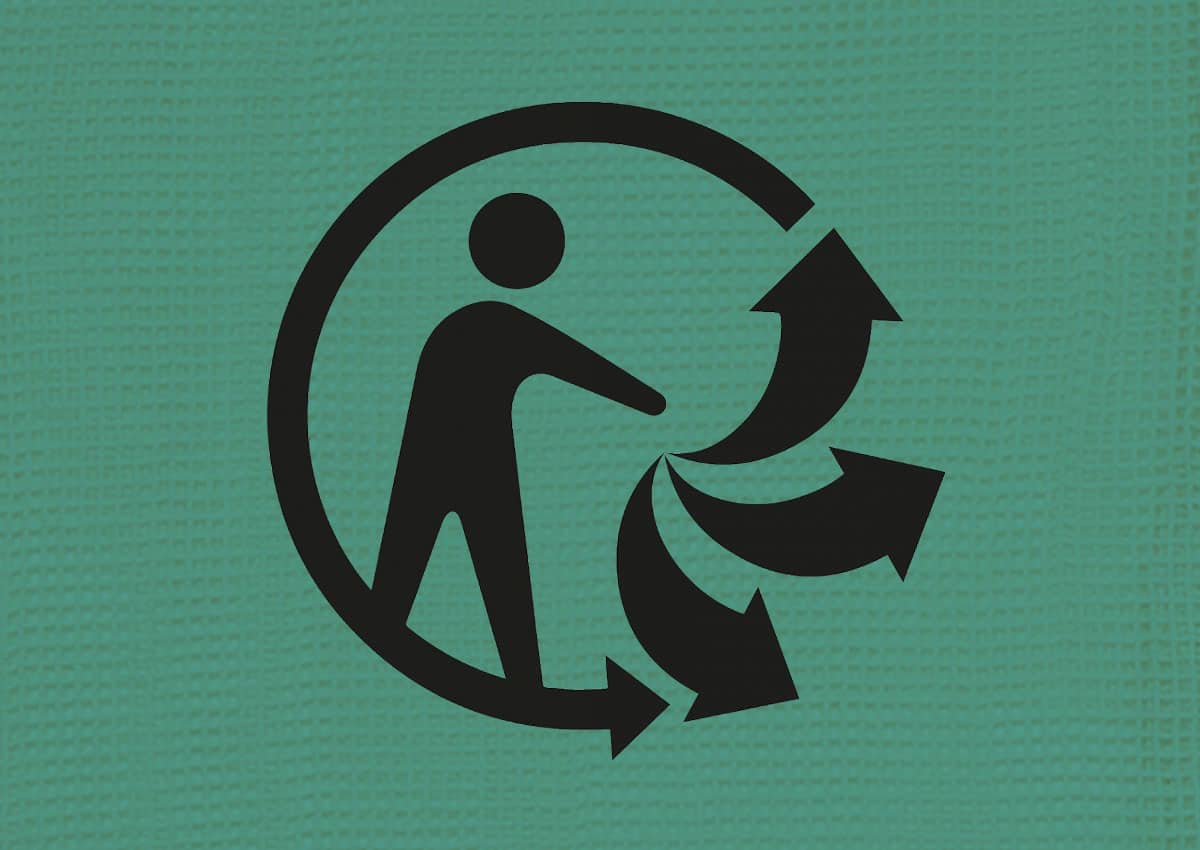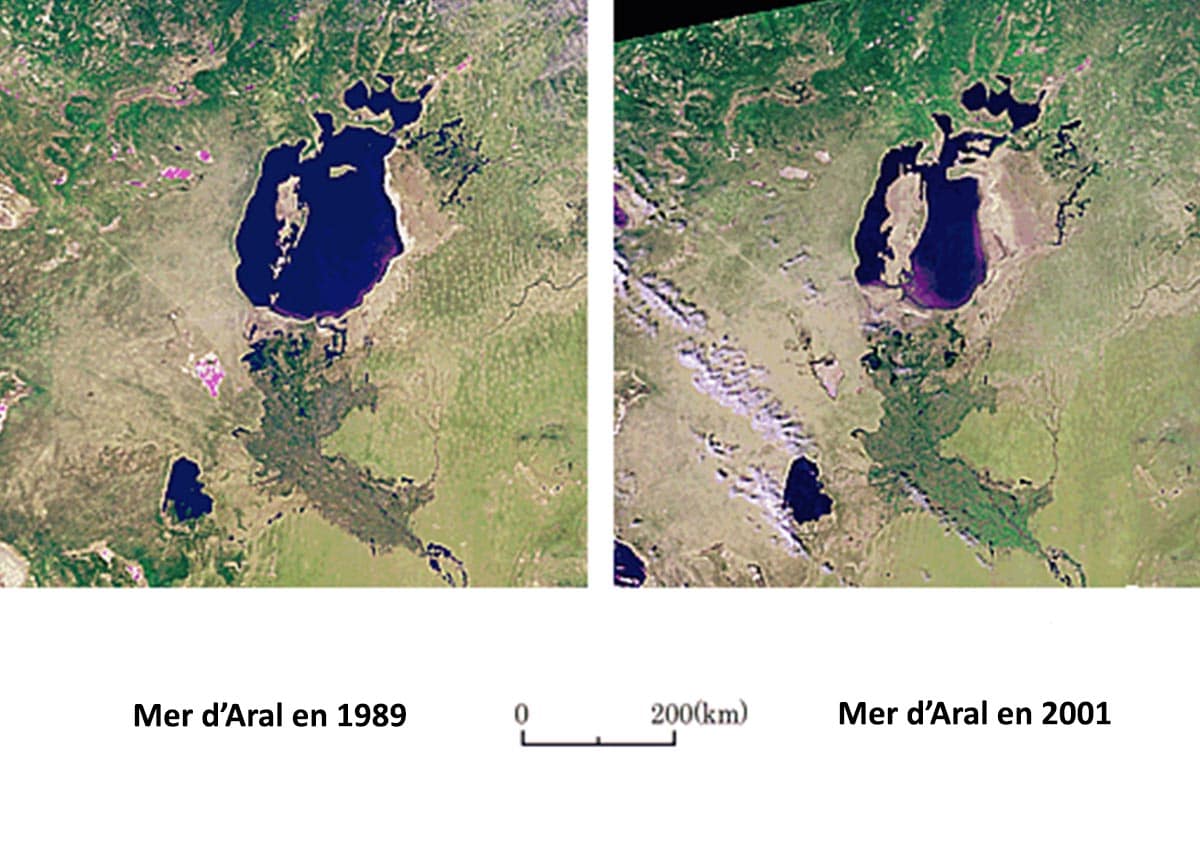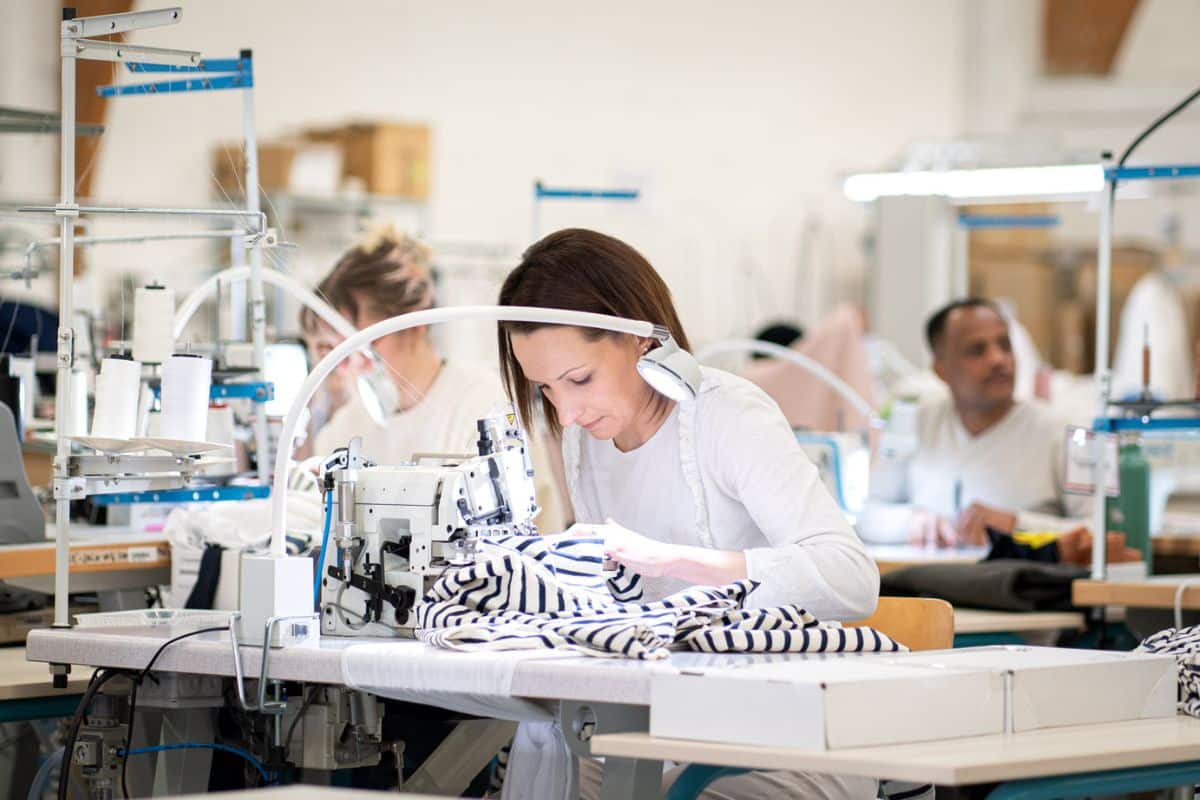En 2024, tous les vêtements, chaussures et linges de maison devront présenter un éco-score. Cet affichage environnemental a été rendu obligatoire par la loi Climat et résilience en 2021. À ce jour, le gouvernement travaille toujours sur les critères et la méthodologie de ce dispositif. Les discussions vont se poursuivre au moins jusqu’à la rentrée. Début juillet, nous nous sommes rendus à La Caserne, à l’occasion de la venue de Bérangère Couillard, secrétaire d’État chargée de l’Écologie, pour faire le point sur l’avancée des travaux de l’affichage environnemental des produits textiles. On vous explique !
L’affichage environnemental des produits textiles, c’est quoi ?
L’affichage environnemental est né la Loi Climat et Résilience (2021). C’est un éco-score représentant l’impact climatique et écologique d’un produit sur une étiquette ou un emballage. Cette note est calculée sur l’ensemble du cycle de vie du produit suivant un référentiel validé et d’une lettre comprise entre A et E. Pour pouvoir obtenir la lettre à afficher, il faut comparer ses données à celles d’un produit standard de la même catégorie et comparable en poids.

L’éco-score textile permet :
Aux consommateurs de comparer l’impact environnemental des produits et de choisir les plus respectueux de l’environnement. Objectif ? Réduire l’impact environnemental de la mode et de contribuer à la transition vers une économie plus durable.
Aux entreprises textiles et marques de mode, de mesurer et réduire l’impact environnemental de leurs produits, de gagner en compétitivité et de progresser en matière d’écoresponsabilité.
Cet éco-score sera accompagné de 8 critères retenus pas le Gouvernement pour apporter le maximum de transparence aux consommateurs (On vous les présente plus bas dans l’article). Cette mesure vise à réduire la consommation de ressources naturelles, les émissions de gaz à effet de serre et la pollution de l’industrie textile. Une étape importante vers une mode plus transparente et plus durable !
Quand la méthodologie sera-t-elle finalisée ?
Les discussions se poursuivront au moins jusqu’à la rentrée. À partir de 2024, les marques auront la possibilité de mettre en place l’affichage environnemental sur la base du volontariat avant qu’il ne devienne progressivement obligatoire.
Les limites du PEF
Lancé en 2013, le PEF (Product Environmental Footprint) est une méthodologie développée par la Commission européenne. En mars 2023, elle a été jugée incomplète à cause de son manque de prise en compte de plusieurs éléments. En effet, à ce jour la méthodologie n’intègre pas les éléments suivants :
- Biodiversité : Les indicateurs PEF liés à l’impact sur la biodiversité sont insuffisants. Par exemple, la déforestation n’est pas prise en compte par l’indicateur “utilisation des terres”.
- Microplastiques : Les fibres synthétiques des vêtements produisent des microplastiques qui polluent massivement l’environnement et la chaîne alimentaire. Ce problème majeur de l’industrie textile est ignoré dans l’ACV et favorise les matières synthétiques et la Fast-fashion.
- Durabilité des vêtements : La qualité des produits et leur cycle de renouvellement influencent fortement leur impact environnemental. Actuellement, ces facteurs ne sont pas pris en compte dans les référentiels d’ACV.
- Mode de production : l’origine géographique des matières premières et des pratiques agricoles n’est pas prise en compte. Cela empêche de valoriser le coton biologique malgré son moindre impact par rapport au coton conventionnel.
Pour rappel, le PEF n’est pas un éco-score : c’est une méthodologie dont les résultats permettent de calculer un score facile à comprendre pour les consommateurs.
Pour tenter de trouver un consensus, le ministère de l’Ecologie a étudié 11 méthodes de calcul et d’affichage d’éco-scores d’acteurs variés. Afin d’éviter les écueils du PEF, la méthodologie officielle est toujours en cours de développement par la Commission Européenne, le Ministère et les acteurs de la filière textile. Elle sera publiée après la rentrée 2023 et l’éco-score textile deviendra progressivement obligatoire en France en 2024. Pour le moment, aucun calendrier n’a été communiqué par le Gouvernement.
Ecobalyse : le simulateur du futur affichage environnemental français
Le Ministère travaille depuis plusieurs mois sur un outil à disposition des acteurs du secteur pour leur permettre de remplir leurs obligations d’affichage : Ecobalyse. Il s’appuie sur les méthodes de référence (Base Impacts ADEME, PEF européen) et il est disponible aujourd’hui en version bêta.
Pour éviter les biais du PEF, Ecobalyse propose notamment d’intégrer prochainement de nouveaux critères, comme l’agriculture biologique et les labels environnementaux. Comme pour le Nutriscore, cela permettra d’obtenir une meilleure représentation de l’impact écologique d’un produit. Une approche qui permettrait de prendre en compte des informations qualitatives, plutôt que de se limiter aux seuls indicateurs quantitatifs fournis par l’Analyse du Cycle de Vie (ACV).
Nous attendons impatiemment l’intégration des critères de l’agriculture bio et des labels dans l’outil Ecobalyse.
Exemple d’une simulation sur Ecobalyse pour :
Un tee-shirt écru 100% coton recyclé post-consommation, de 100g avec une masse surfacique de 200g/m², traçabilité : le travail de la matière, la filature, le tricotage et le lieu de confection sont situés en France.

Cet indicateur n’a pas de dimension, il se mesure en Points (Pt), en milliPoints (mPt) ou en microPoints (µPt) avec 1 Pt = 1 000 mPt = 1 000 000 µPt. 1 Pt correspond à l’impact total d’un européen sur une année.
Quels sont les critères retenus pour l’affichage environnemental ?
Si la méthodologie n’est pas encore validée, nous connaissons les 8 critères d’impact retenus par le Gouvernement qui devront être affichés en plus de l’éco-score.
- La consommation d’eau utilisée
- La durabilité physique des textiles
- Les conditions de production
- L’utilisation de pesticides et de produits chimiques
- Les rejets de microplastiques
- La valorisation des matières recyclées
- La valorisation des textiles reconditionnés
- L’impact de la fast fashion
Ces éléments sont validés mais doivent être approfondis et pondérés, afin d’être affichés en complément de l’éco-score.
Étiquette physique ou affichage digital ?
Selon la Ministre, dans un premier temps l’affichage sera obligatoire progressivement et uniquement sur Internet. Elle encourage toutefois les acteurs à mettre le maximum d’informations sur les étiquettes physiques.
Dans un rapport concernant les échanges avec le groupe de travail en charge de l’affichage environnemental alimentaire, l’ADEME met en évidence la complémentarité de ces deux approches :
- L’affichage sur les étiquettes physiques permet aux consommateurs d’avoir une information immédiate.
- L’affichage dématérialisé quant à lui offre la possibilité de fournir davantage d’informations tout en garantissant la transparence de la méthodologie, sans surcharger l’étiquette ou l’emballage.
Quels sont les défis de l’affichage environnemental des produits textiles ?
Pour les entreprises textiles, la difficulté est de collecter les données nécessaires au calcul de l’impact environnemental de leurs produits. Ces données peuvent être difficiles à obtenir et à analyser.
Pour les acteurs de la filière : le défi est que les consommateurs puissent comprendre les informations et les notes. Ces données peuvent en effet être complexes et difficiles à interpréter.
Malgré ces défis, l’affichage environnemental des produits textiles est une mesure importante pour la transition vers une mode plus durable. C’est une avancée importante pour les consommateurs, les entreprises textiles et l’environnement.
De premières avancées pour une industrie textile plus consciente
Depuis le 1er janvier 2023, la loi anti-gaspillage pour une économie circulaire (AGEC) impose aux entreprises du secteur textile de fournir aux consommateurs sous un format dématérialisé et gratuit des informations sur :
- La traçabilité : l’indication du pays de réalisation des 3 dernières étapes de transformation d’un produit textile (tissage/tricotage, ennoblissement/impression, confection).
- Les risques de rejet de microfibres plastiques liés à l’utilisation de matières synthétiques.
- La présence de substances dangereuses.
- La présence de matières recyclées et la recyclabilité du produit.
Les entreprises concernées sont celles réalisant un CA supérieur à 50 millions d’euros, et produisant plus de 25 000 pièces par an (producteurs, importateurs, distributeurs). Les plus petites entreprises suivront les années suivantes. Cette obligation est une première étape très positive pour accroître la transparence de la filière textile.
Si nous ne savons pas à ce jour si les accessoires seront soumis à l’obligation de l’éco-score textile, nous avançons déjà sur le calcul d’impact de tous nos produits. En tant qu’acteur historique engagé, nous vous garantissons la traçabilité et la mesure d’impact de nos créations. Depuis toujours, l’aspect social fait également partie de nos piliers. Nous fabriquons des produits éthiques, dans une démarche de commerce équitable. C’est pourquoi en parallèle de l’éco-score, nous encourageons les marques à aller encore plus loin dans la transparence (gouvernance, impact social, impact sur la santé humaine, bien-être animal).
Nous pensons que c’est dès aujourd’hui et tous ensemble que nous pouvons faire bouger les lignes de l’industrie textile.
Sources
Le site economie.gouv.fr
La loi 2021-1104, sur Légifrance, publiée le 22 août 2021.
Communiqués de presse et le dossier publiés sur expertises.ademe.fr sur l’affichage environnemental.
L’industrie textile s’inquiète de la mise en place de l’affichage environnemental de vêtements – Le Monde https://www.lemonde.fr/economie/article/2023/07/11/l-industrie-textile-s-inquiete-de-la-mise-en-place-de-l-affichage-environnemental-de-vetements_6181517_3234.html
